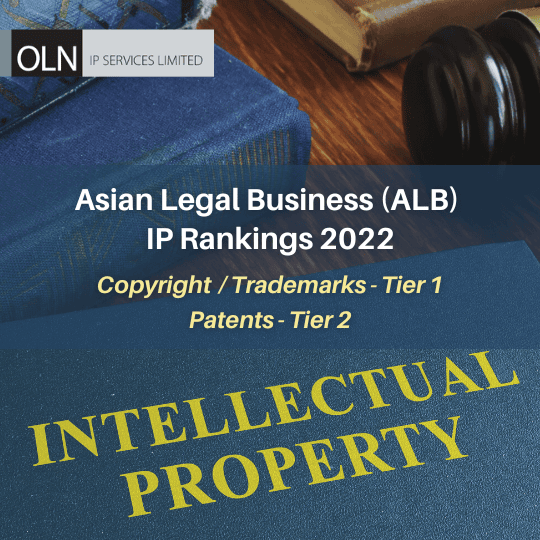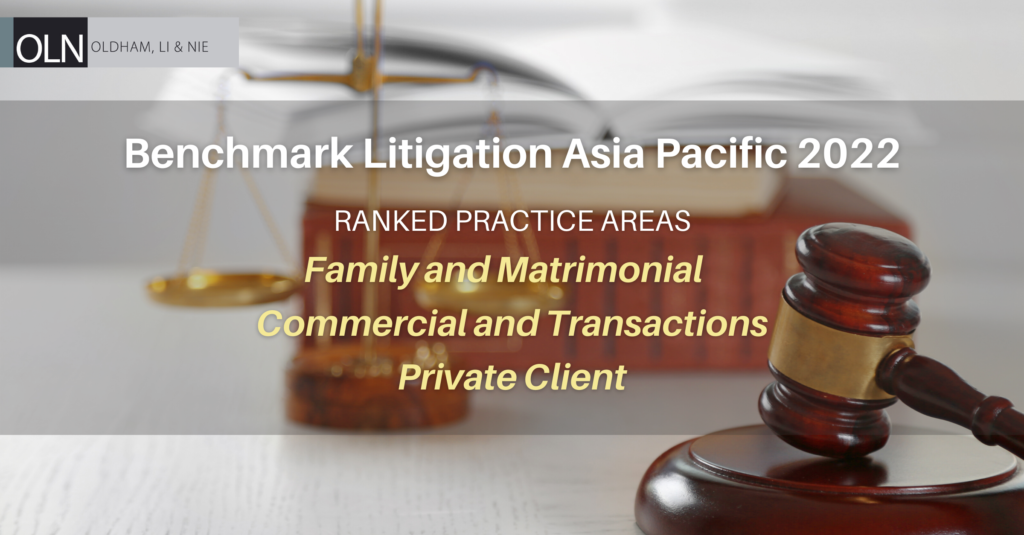
Our OLN IP team has been listed as a Tier 1 firm for Copyright / Trademarks and as a Tier 2 firm for Patents in the Asian Legal Business (ALB) “Asia IP Rankings 2022” for Hong Kong. To view the full rankings please click here.
OLN IP was established on 1 January 2020, and we are particularly proud that our new venture has received this recognition from ALB for the second time.
OLN IP is led by Benjamin Choi and offers tailored, commercially-driven advice to intellectual property owners, across the different IP asset classes, including IP portfolio management.
About ALB Asia IP Rankings
ALB IP Rankings recognise the top firms for Intellectual Property in Asia. The rankings draw information from firm submissions, interviews, editorial resources, and market suggestions to identify and rank the firms.
 香港中环雪厂街二号圣佐治大厦五楼503室
香港中环雪厂街二号圣佐治大厦五楼503室 +852 2868 0696
+852 2868 0696









